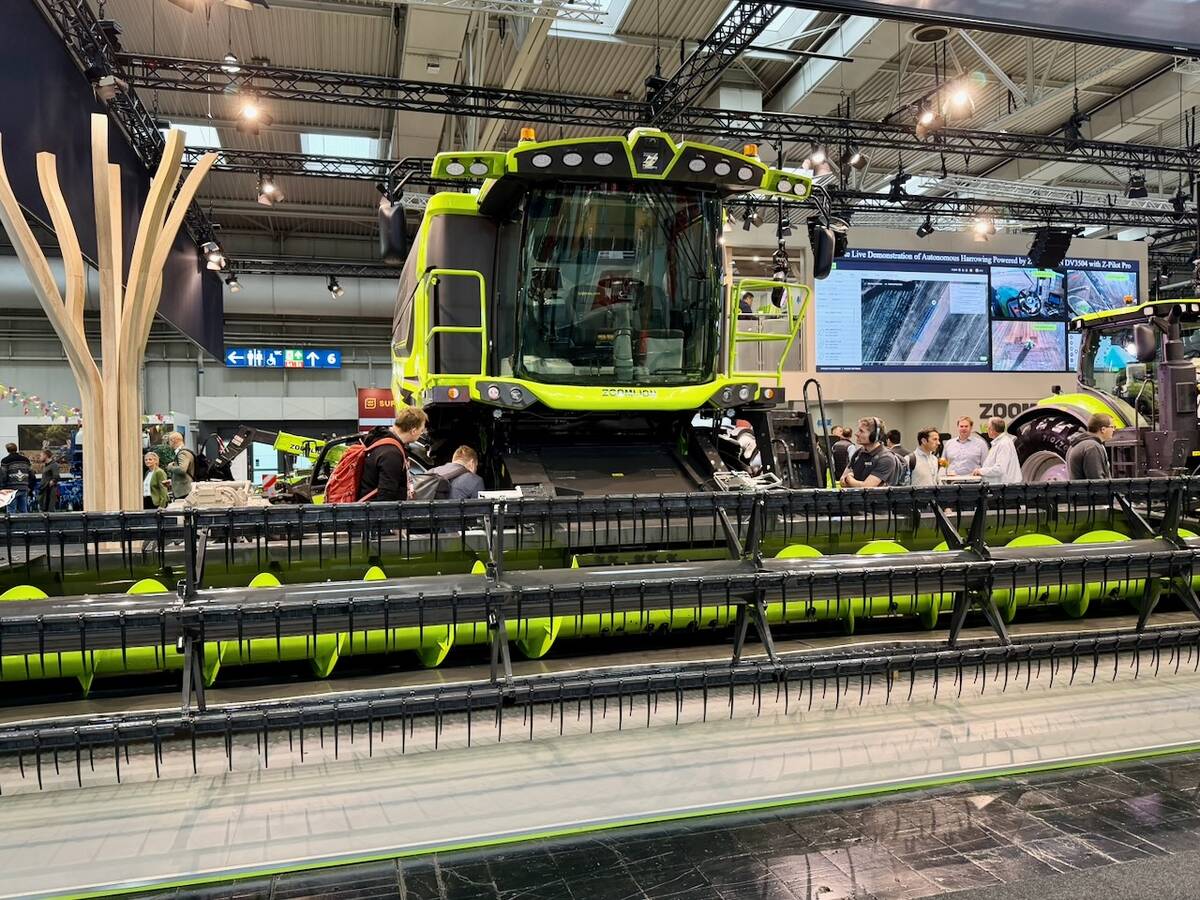Massive beef recall | Food processor loses licence amid food safety issues, puts 2,200 employees in job limbo
A massive beef recall that led to the temporary closure of the XL Foods processing plant in Brooks, Alta., shows inherent problems with modern meat processing, says a union official.
Potential E. coli O157:H7 contamination has resulted in the recall of more than 400 XL products in Canada and the United States.
Tom Hesse of the United Food and Commercial Workers, local 401, said XL Foods promised it would address sanitation for workers and processing equipment during labour negotiations last year.
“We said to the company that there were critical food safety issues and we negotiated a whistleblower clause so employees could speak to outside agencies regarding production in the plants and food safety practices.”
Read Also

Agritechnica Day 3: Hybrid drive for a combine, data standards keep up to tech change and tractors of the year
Agritechnica 2025 Day 3: Hybrid drive for a combine, data standards keep up to tech change and tractors of the year.
Hesse said part of the problem is the volume and speed involved in processing as many as 4,800 cattle per day.
“The more quickly that line moves, more beef is ultimately sold. That systemic pursuit of production and profit is a system where food safety can really fall through the cracks.”
About 2,200 people were put out of work when the Canadian Food Inspection Agency pulled the company’s licence citing a series of practices that needed attention.
Hesse called it employment limbo because the workers do not know if they are laid off or when they may be called back to work.
The CFIA said XL has 40 full-time inspectors and six veterinarians on the floor.
Products that include ground meat and whole muscle cuts such as steaks and roasts were removed from store shelves.
XL issued a short news release Oct. 1 saying consumers can return any recalled product for a full refund. It said the company is working wth the CFIA to complete the recall and assist with the investigation.
It also said it was implementing enhanced food safety protocols.
The CFIA has posted a timeline of the events on its website.
The first signs of trouble appeared Sept. 4 when the food safety inspection service in the U.S. tested raw boneless trim imported from XL and confirmed a positive E. coli result. It informed the CFIA and additional testing began. Food recalls started Sept. 16.
About 400 products are on the recall list with the most recent being whole muscle cuts. Recalled products were manufactured on Aug. 24, 27, 28, 29 and Sept. 5.
The agency says further trace outs and more recalls may occur because further processors may have bought and distributed the meat.
The plant was closed Sept. 27 when the CFIA in a televised statement said adequate controls for food safety were not fully implemented in the facility and a number of deficiencies needed to be addressed.
XL Foods will not resume operations until the agency is satisfied with the facility’s ability to effectively manage food safety risks.
Industry and government officials say this incident is not a failure in the overall food inspection system.
“When you think about the volume of food that is produced and the volume of beef that is produced in this province, it is very impressive that we have such a great safety record,” said Alberta agriculture minister Verlyn Olson.
“This is a very serious incident, and I would caution people against starting to think about the whole system having failed somehow.”
Strict food safety procedures are standard throughout North America, said Canada Beef Inc. chair Chuck MacLean.
“Every one of these organizations are focused on food safety,” he said.
“This is one processor who happens to be one of the largest in Canada. It is disappointing when these types of things happen.”
MacLean said he is not concerned about who found the original infection.
“Does it matter that a U.S. or Canadian inspector found it? To me what matters is that combined, they do a good job of tracking this product,” he said.
“Nobody wants to have this happen and nobody wants anybody to get sick. In everybody’s business, errors get made and that is sad.”
Past recalls and incidents of food poisoning have taught industry the hard way about the importance of sanitation and prevention.
“For a dangerous pathogen like this, prevention is absolutely the most important thing.
“You do not want to have to do a recall. That is putting people at risk,” said Jeremy Russell of the North American Meat Association.
“You want to do everything you can that would prevent the situation that requires a recall.”
The first major E. coli food scare happened when the restaurant chain Jack in the Box sold improperly cooked burgers at an outlet in Washington state in 1993.
About 400 people were sickened and three children died. The case prompted international research and implementation of improved food safety practices at packing plants and restaurants.
Education, best practices programs, testing programs, inspections, interventions and sanitation standards are now the norm.
Research ramped up as a result of that case, and government regulations were changed to allow practices such as steam pasteurization and organic acid washes.
“Back in the late 1980s and early 1990s, they still trimmed everything with a knife, and when you are dealing with invisible microscopic organisms, that is not the most effective way to assure safety,” Russell said.
“Those processing aids are what really have the most impact on any pathogens. In the last 20 years, they have become industry standard.”















